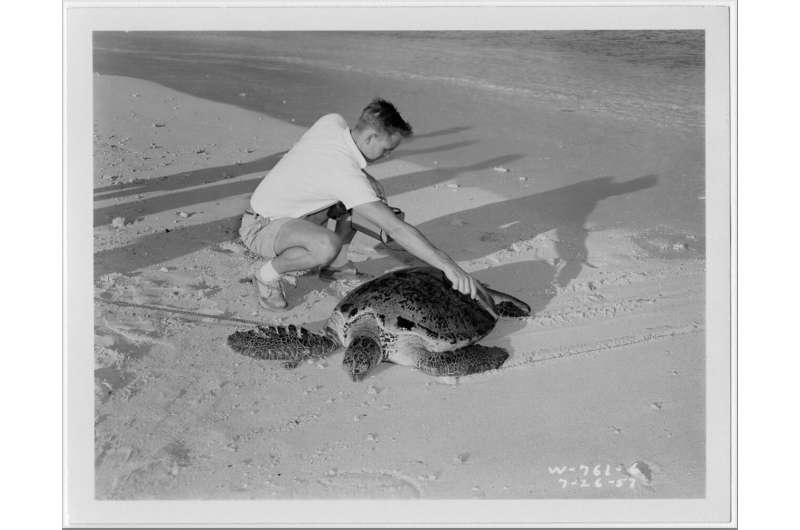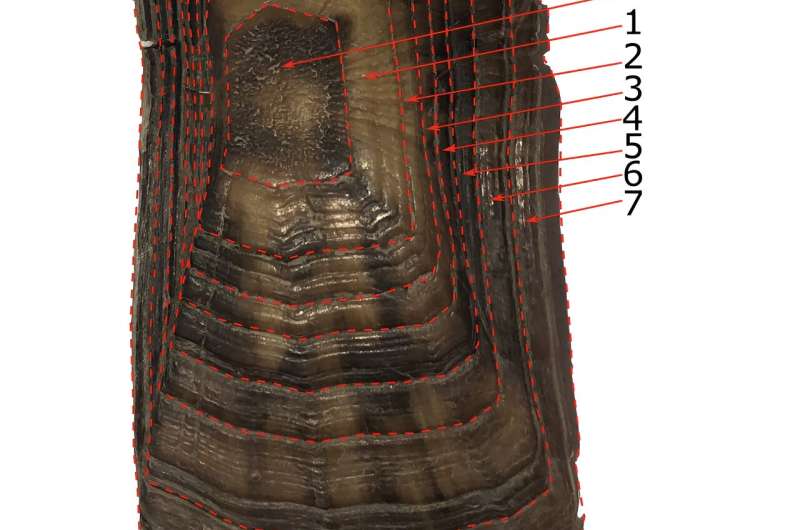This article has been reviewed according to Science X's editorial process and policies. Editors have highlighted the following attributes while ensuring the content's credibility:
fact-checked
peer-reviewed publication
proofread
Uranium signatures in turtles and tortoises near nuclear testing and waste sites

The shells of turtles, tortoises, and sea turtles keep growing as long as the animals live—and some of them live a remarkably long time.
Cyler Conrad and colleagues analyzed the shells of five specimens from areas that potentially accumulated anthropogenic uranium through nuclear fallout and/or waste. The findings are published in the journal PNAS Nexus.

Unusual uranium signatures were found in a green sea turtle from Enewetak Atoll in the Republic of the Marshall Islands, a desert tortoise from southwestern Utah near the Nevada National Security Site (formerly known as the Nevada Test Site), a river cooter from the Savannah River Site in South Carolina, and a box turtle from Oak Ridge, Tennessee, where nuclear weapons work was conducted after World War Two.
The turtle from Enewetak Atoll was collected in 1978, around 20 years after the end of nuclear testing at the site. The researchers speculate that cleanup activities may have stirred up contaminated sediment—but add that legacy contamination present in the atoll lagoon is also a possibility.
Separate samples from different shell layers of the eastern box turtle collected from Oak Ridge in 1962 told a temporal story of its uranium exposure. The box turtle's most contaminated shell layer was the one it was born with, suggesting even higher contamination levels in its mother. The legacies of 20th century nuclear deployment, testing, and production still amble and swim among us—and chelonian shells could be used as environmental monitors, according to the authors.
More information: Cyler Conrad et al, Anthropogenic uranium signatures in turtles, tortoises, and sea turtles from nuclear sites, PNAS Nexus (2023). DOI: 10.1093/pnasnexus/pgad241
Journal information: PNAS Nexus
Provided by PNAS Nexus



















